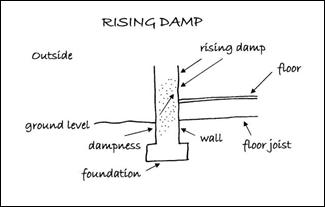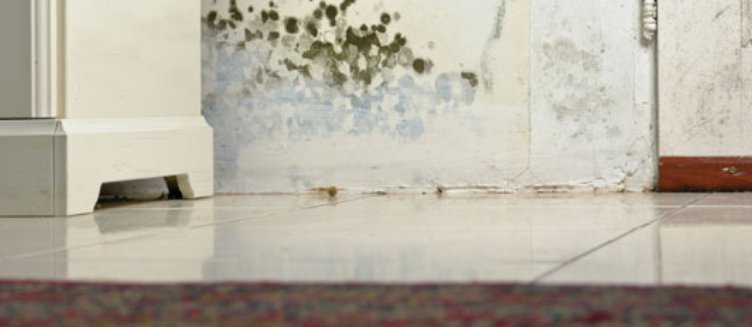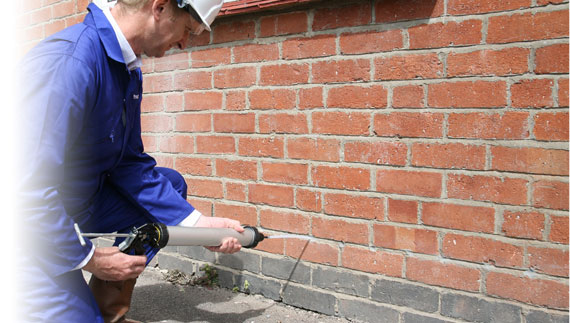A Guide To Rising Damp
Rising damp in walls or buildings is caused by the flow of water (usually groundwater) in a vertical direction. The walls may be made of block, brick or stone with water usually rising through pores in the masonry through a process termed as capillary action. In short, the water flows up much like how molten wax rises through to the tip of the wick in a candle. The extent to which the water rises is dependent on factors such as the rate of evaporation of the water and the structure of the pores.
Water is usually carried up walls that have a higher proportion of fine pores than those with coarser pores. Generally, it is seen that water rises up to an extent of about 1.5 metres on walls but in case of walls that have impervious coverings, water may rise up to a height of 2 metres. The rising of water usually stops at a point where gravity overcomes the force of the upward capillary action.
Signs of Rising Damp
Buildings are usually constructed with a damp proof course in the walls. However, rising damp becomes visible when the damp proof course does not either exist or becomes damaged.
Typical signs of rising damp in the walls include appearance of yellow/brown stains on the wall above the skirting and peeling and blistering of the wall. White fluffy deposits are sometimes seen on the wall plaster. Black mould spots are also seen on the wall. Rising damp causes rotting of floors and skirting boards. Damp/wet patches and water runs from walls may also appear.Ground water contains soluble salts such as nitrates, chlorides and sulphates. These deposit on the wall as water and further absorb moisture from the atmosphere giving a permanent damp feeling to the wall.
Treatment of Rising Damp
Rising damp is unsightly and sometimes unhealthy too. Heat loss occurs in walls with rising damp because of increased conductivity. Therefore, it is important to treat rising damp as soon as it is spotted.
Prior to treating rising dampness, it is important to find out as to what is causing the problem. It is in the best interests of the property owner to contact professionals for insight and advice about the cause of rising dampness. Scientific analysis may prove to be a necessary aid to diagnose the actual cause of the rising dampness. Tests include the use of moisture meters, capacitance and electrical resistance meters, salt analysis and use of hygrometers. Continuous monitoring for a period of time may be essential to establish the root cause of the dampness. However, this can be expensive. Do it yourself techniques have evolved that are both cheap and effective.
Injecting a cream-based silicone compound into the wall using a cartridge is an effective method of treating rising dampness. The method is safe and easy to use, leaves little or no odour, and gives good results. The treated/injected wall is left to dry before re-plastering the wall.
A new damp-proof membrane can be fixed in the area to be repaired. However, the damaged timber or affected plaster work has to be replaced.
Other methods include impregnating walls with chemical solutions through holes at the bottom of the walls to create a waterproof barrier. Porous siphons can be inserted into walls that may absorb the dampness from the walls.
If flower beds installed above the damp barrier causes rising dampness, these can be lowered so as to lie below the damp barrier. If such cases, the walls dry out by heating the rooms or opening the windows.
Effective measures for the treatment of rising damp depend on accurate analysis of the problem. Remedial measures may be taken to either cure the causes of rising dampness or manage the signs/symptoms of the problem.










